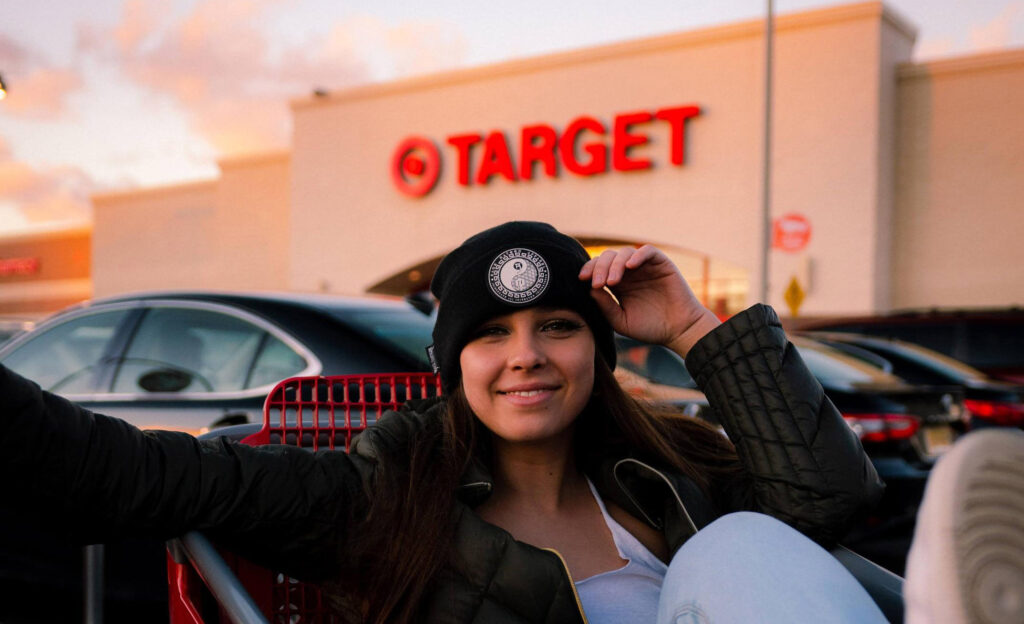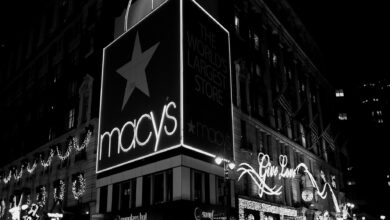18 Exceptional Facts About Target
Unveiling the Passion and Purpose Driving America’s Beloved Retail Giant. Step into a Target store and you’ll be greeted with a colourful and inviting shopping experience, complete with trendy clothing, stylish home decor, and an endless selection of products at affordable prices. But there’s more to Target than just its shopping appeal. Here are some interesting facts about Target:

Target’s first store opened in Roseville, Minnesota on May 1, 1962.
1 The store was designed to be a discount retail chain that offered a wide variety of merchandise at low prices, and it quickly became popular with consumers.
Today, Target has over 1,900 stores across the United States and is known for its trendy and affordable merchandise, as well as its commitment to corporate social responsibility.
The company’s name was originally “Target”
2 when it opened its first store in 1962. The name was chosen to reflect the company’s mission to offer a wide range of products that would appeal to a broad range of customers, much like a bullseye.
Today, Target is one of the most recognizable retail brands in the United States, known for its affordable prices, stylish house brand products, and commitment to customer service. 
Target’s signature red bullseye logo was designed in 1962 by the company’s graphic designer, Stewart K. Widdess.
3 The logo has gone through several updates and iterations over the years, but the basic design of a red bullseye with a white centre has remained the same.
The logo has become one of the most recognizable in retail, and is closely associated with the Target brand. In recent years, Target has also introduced a secondary logo that features the word “Target” written in lowercase letters with a red line above the “g”, which is also used in branding and marketing materials.
Target is known for its affordable and stylish house brand products.
4 Target’s house brands include a wide range of products, from clothing and accessories to home goods and groceries.
One of Target’s most popular house brands is “Up&Up,” which offers a wide range of affordable and high-quality household essentials like cleaning supplies, personal care products, and baby care items.
Another popular house brand is “Room Essentials,” which offers stylish and affordable home decor and furniture items that are designed to appeal to a younger, trendier demographic.
Target also offers several fashion-focused house brands, including “A New Day” and “Universal Thread,” which offer affordable and stylish clothing and accessories for women. These brands are known for their on-trend designs and high-quality materials, which make them a popular choice among fashion-conscious shoppers.
Overall, Target’s house brands have helped the company differentiate itself from other retailers and build a loyal customer base. By offering affordable and stylish products that can only be found at Target, the company has created a unique and appealing shopping experience that keeps customers coming back for more.
Target stores are often designed with a specific color scheme that varies depending on the location.
5 The company’s signature color scheme is consistent across all stores. Target’s color scheme is known as “Bullseye” and features a bright red color for the company’s logo, paired with white and shades of gray.
This color scheme is used not only in the stores, but also in the company’s branding and marketing materials, as well as its website and mobile app.
In addition to the Bullseye color scheme, Target may also incorporate local design elements into some of its stores. For example, a Target store located in Hawaii might feature tropical-inspired decor, while a store in a historic building might incorporate architectural elements from the building into its design. Overall, Target strives to create a consistent brand image while also tailoring its stores to their local communities.
Target is the second-largest retailer in the United States, behind Walmart.
6 Target operates more than 1,900 stores across the country, and it is a popular destination for shoppers looking for a wide range of products at affordable prices. In addition to its physical stores, Target also has a robust online presence, offering customers the convenience of shopping from home and having their purchases delivered directly to their door.
Overall, Target’s commitment to quality, value, and customer service has helped it become one of the most successful and popular retailers in the country.
Target has been featured in several movies and TV shows.
7 The company’s distinctive red and white branding and recognizable shopping experience have made it a popular choice for filmmakers and TV producers looking for a familiar and relatable setting.
One of the most notable examples of Target’s appearances in popular media is in the movie “Target,” a 1985 action-thriller starring Gene Hackman and Matt Dillon.
The film was set and filmed primarily in a Target store, and features several scenes that take place in the store’s aisles and backrooms.
In addition to “Target,” Target has been featured in numerous other movies and TV shows, including “Black-ish,” “Modern Family,” and “Glee.”
These appearances often include shots of Target’s distinctive red shopping carts, its well-known circular logo, and its bright and colourful store displays.
Overall, Target’s appearances in popular media have helped to solidify the company’s position as a recognizable and iconic brand, and have contributed to its popularity among consumers.
Target has a long history of supporting social and environmental causes.
8 The company has established a number of initiatives and programs aimed at promoting sustainability, supporting local communities, and advancing social causes. For example, Target was one of the first retailers to offer recycling in stores, and it has also implemented energy-efficient lighting and other measures to reduce its environmental impact.
The company also supports initiatives such as the LGBTQ community, women’s empowerment, and racial justice, and it has established partnerships with a number of non-profit organizations to advance these causes. In addition, Target is committed to promoting diversity and inclusion in the workplace, and it has been recognized for its efforts to create a diverse and inclusive workforce.
Overall, Target’s commitment to social and environmental responsibility has helped it build a strong reputation as a responsible and ethical company.
Target’s mascot is a Bull Terrier named Bullseye.
9 Bullseye first appeared in Target’s advertising campaigns in 1999, and he has since become a beloved symbol of the brand. Bullseye is known for his cute and friendly demeanour, and he has appeared in a variety of Target’s advertising campaigns, commercials, and social media posts.
In addition to his role as a mascot, Bullseye has also been featured in a number of charitable initiatives and events, and he has become a popular figure among Target’s customers and fans.
Overall, Bullseye is a key part of Target’s brand identity and has helped the company build a strong emotional connection with its customers.
Target’s corporate headquarters are located in Minneapolis, Minnesota.
10 The company’s headquarters are situated in the City Centre neighbourhood of downtown Minneapolis, and they occupy several buildings in the area.
The corporate headquarters are home to a variety of departments and teams, including executive leadership, finance, marketing, human resources, and more.
The location in Minneapolis is significant for Target, as the city is where the company was founded and has a long history of supporting the company’s growth and success.
Today, the corporate headquarters serve as the hub of Target’s operations, providing strategic direction and support for the company’s stores, online business, and other initiatives.
The company has more than 1,900 stores across the United States.
11 The company’s stores are located in all 50 states, and they range in size from small-format stores in urban areas to large-format stores in suburban and rural areas.
Target stores offer a wide range of products, including clothing, household essentials, groceries, electronics, and more, and they are known for their affordable prices and stylish house brand products.
In addition to its physical stores, Target also has a strong online presence, with a robust e-commerce platform that allows customers to shop online and have their purchases delivered directly to their door.
Overall, Target’s extensive store network and e-commerce capabilities have helped it become one of the most successful and popular retailers in the United States.
Target’s first international store opened in 2013 in Canada.
12 The company had ambitious plans to expand quickly in Canada, with a goal of opening more than 100 stores in the country. However, Target’s expansion into Canada was ultimately unsuccessful, and the company announced in 2015 that it would be closing all of its Canadian stores.
There were several factors that contributed to Target’s failure in Canada. One of the main challenges was the company’s inability to effectively compete with established Canadian retailers like Walmart and Canadian Tire.
Additionally, Target faced logistical and supply chain issues that made it difficult to keep its stores stocked and customers satisfied. Finally, Target’s Canadian stores were criticized for their high prices and poor selection of merchandise, which turned off many consumers.
While Target’s expansion into Canada was ultimately unsuccessful, the company has continued to grow and expand in other markets, both in the United States and internationally.
Target currently operates more than 1,900 stores in the United States, and has also established a presence in Mexico through a partnership with a local retailer.
Target’s first online store launched in 1999.
13 At that time, Target’s online store offered about 10,000 products, including clothing, electronics, and toys. Since then, Target has expanded its online presence and now offers millions of products for purchase online.
Target’s website also includes features such as product reviews, online shopping lists, and free shipping for orders over a certain amount.
Target is known for its designer collaborations.
14 Target’s designer collaborations have been successful for several reasons. First, they allow the company to tap into the popularity and influence of well-known designers, which helps Target attract new customers and boost sales.
Second, the limited-edition nature of these collections creates a sense of exclusivity and urgency, which can drive demand and create buzz around the products.
Finally, Target’s affordable price point and wide distribution network make these designer collaborations accessible to a broad range of consumers, which helps the company reach a larger audience and generate more sales.
Overall, Target’s designer collaborations have been a key element of the company’s branding and marketing strategy, helping the company build its reputation as a stylish and trendy retailer that offers affordable and accessible fashion and home goods.
Target has a unique marketing strategy.
15 One of the key elements of Target’s marketing approach is its focus on design and style. Target’s branding and advertising campaigns often feature sleek and stylish imagery, as well as collaborations with popular designers and celebrities.
This design-focused approach helps Target stand out in a crowded retail landscape and appeal to consumers who are looking for more than just practicality from their shopping experiences.
Another key element of Target’s marketing strategy is its use of data and technology. Target has invested heavily in data analytics and technology, which allows the company to track and analyse customer behaviour and preferences.
This data is used to create personalized marketing campaigns and offers that are tailored to individual customers’ interests and needs.
This approach helps Target build customer loyalty and increase sales by creating a more engaging and relevant shopping experience for each customer.
Overall, Target’s marketing strategy has helped the company establish a strong brand identity and connect with consumers in a meaningful way.
In 2020, Target implemented a policy that required all customers to wear masks in their stores to help prevent the spread of COVID-19.
Target has a strong commitment to sustainability.
16 The company has set a number of ambitious environmental goals that aim to reduce its carbon footprint, conserve resources, and promote sustainable sourcing and manufacturing practices.
For example, Target has committed to sourcing 100% of its electricity from renewable sources by 2030, and to achieving net zero emissions across its entire value chain by 2040. The company has also set goals to reduce water usage in its operations, eliminate waste, and increase the amount of sustainable products it sells.
In addition to these environmental goals, Target has also taken steps to promote social sustainability, such as by committing to pay all of its employees a minimum wage of $15 per hour and by supporting diverse and inclusive hiring practices.
Overall, Target’s commitment to sustainability is a key part of its corporate strategy, and the company has received recognition from a number of sustainability organizations for its efforts in this area.
Target has a diverse workforce and has been recognized for its efforts to promote diversity, equity, and inclusion in the workplace.
17 Target’s commitment to diversity starts at the top, with a leadership team that is dedicated to creating a culture of inclusivity. The company has implemented a number of initiatives to promote diversity, including unconscious bias training for employees, mentorship programs for underrepresented groups, and employee resource groups that provide support and advocacy for diverse communities.
In addition, Target has set ambitious diversity and inclusion goals, including increasing representation of Black, Indigenous, and People of Colour (BIPOC) at all levels of the company, increasing representation of women in leadership positions, and creating a more inclusive culture that values and respects all employees.
Target’s efforts to promote diversity, equity, and inclusion have been recognized by a number of organizations. The company has been included on Forbes’ list of America’s Best Employers for Diversity and received a score of 100 on the Human Rights Campaign’s Corporate Equality Index, which measures LGBTQ-inclusive workplace policies and practices.
Target is able to create a more welcoming and supportive environment for all employees, regardless of their background or identity. This, in turn, can lead to increased employee engagement, productivity, and overall job satisfaction.
Additionally, having a diverse workforce can help Target better understand and meet the needs of its diverse customer base, leading to increased customer loyalty and revenue.
Target is a popular destination for families.
18 The company offers a wide range of products and services that appeal to families, including groceries, clothing, household essentials, electronics, and toys. In addition to offering a diverse selection of products, Target is also known for its affordable prices and customer-friendly policies, such as free shipping and easy returns.
By catering to the needs of families, Target has become a go-to destination for parents and caregivers who are looking for convenient and affordable shopping options.




